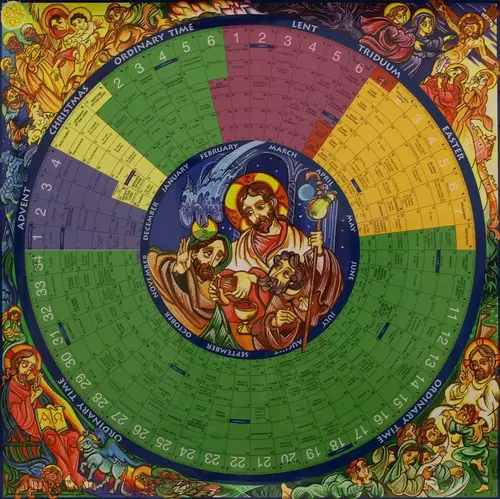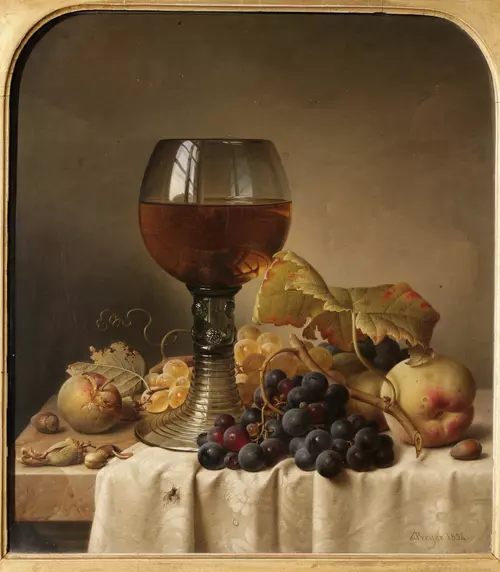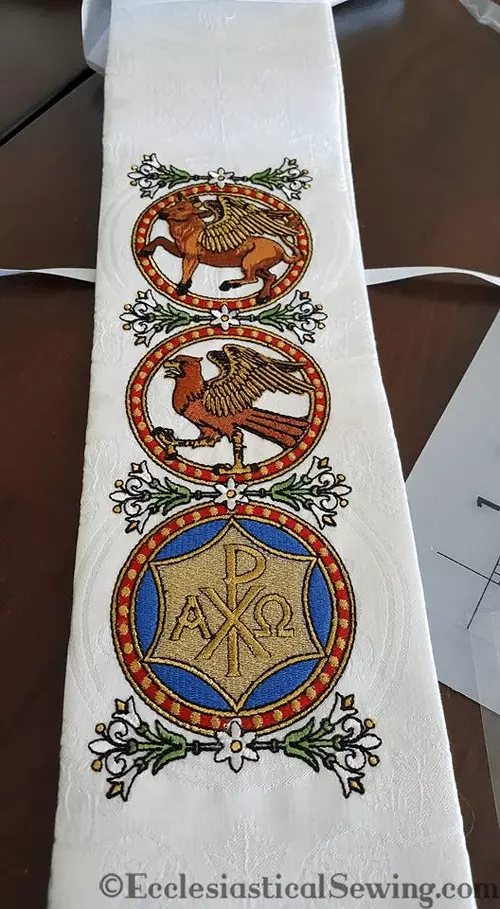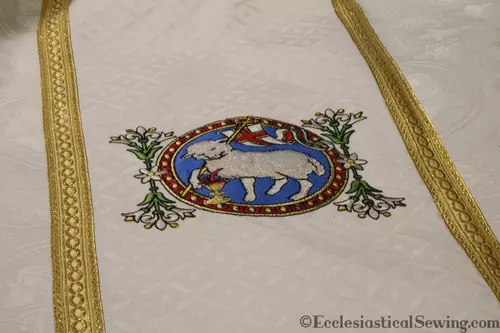The Church Year is a Pageant
The Church Year is a Pageant
How do you view the church year? Have you ever thought of the church year as a pageant – not the kind of pageant or contest where there is a winner crowned, but a pageant where a historical scene, period, or event is brought to life? The church year is something we think about daily here in the studios at Ecclesiastical Sewing and as we attend our church. But do we really see the church year for what it is? Do we see it as a pageant?
I recently pulled a “new” old book from our Ecclesiastical Studio Library on the topic of church symbols and was struck while reading the preface:
“As Christians, we are surrounded by a great cloud of witnesses, some living, others long since dead. A true picture of the church goes beyond congregations, denominations, or even time. One of the points of the genius of the church year is that it is an ongoing pageant, bringing to mind those historic events of two thousand years ago, connecting them with the history of the Jews which preceded, and the history of Christianity which resulted. The church year, in short, associates us with God’s activity and with that mighty cloud of witnesses which has gone before us, inspiring us to be Christ’s mighty arm against the foe in our own time. The church year is a pageant, yet more than a pageant. It is life itself-life in Christ unfolded.”
As Christians, we go through the church year, the colors, the seasons, and the symbols. But how often do we stop to think about these things? Do we think about our connection with the past and with all of the communion of saints who have gone before us? What role do the symbols and liturgical colors play in the life of the church?
Why do we have seasons and symbols in the church year?
Seasons and symbols often grew out of the events which happened throughout the church year. People are familiar with representational art where a painting represents an object. A still-life painting may be of flowers or a bowl of fruit that represents a real object.
Still Life: Fruit and Goblet 1854 by Johann Wilhelm Preyer Copyright Victoria and Albert Museum Used by permission.
Yet, symbolism is somewhat different. Symbolism is not meant to show an object, but rather to lead us through these things to another idea or deeper thought.
Roberts, Carrie. Evangelist Stole. December 2017. Personal Collection. Baxter, MN.
The Symbol of St. Luke the Evangelist
Take, for example, the symbol of St. Luke the Evangelist. His symbol is the winged bull or ox. The symbol is often stylized. Luke was the author of the Gospel that bears his name, as well as the book of the Acts of the Apostles. His writings are noted for being poetic and beautiful. Luke shows us that Christ was not merely the King of the Jews. Rather, Christ was and is the Savior of the World. Throughout his writings, Luke shows us Christ’s priestly duties and sacrificial works. In the Old Testament, the ox was a sacrificial animal. The Ox of St. Luke’s symbol reminds us of Christ’s sacrificial work, including his suffering and death on the cross for our salvation. The wings on the Ox remind us that the Gospel is to be spread throughout the entire world.
As we take you through the seasons of symbols for the church year, think about the rich and bountiful harvest that has been provided. There are riches in abundance for the eyes to behold and for the mind to contemplate.
Roberts, Carrie. Evangelist Chasuble Design. December 2017. Personal Collection. Baxter, MN.
These things connect us with the communion of saints who have gone before us. They remind us and teach us of God’s promises. They provide beauty in our dreary existence as we await the glory of Christ’s eternal kingdom.
…….Further, the church year guarantees a balanced diet in emphasis throughout the year.
Soli Deo Gloria
Be sure to visit our online store front Ecclesiastical Sewing where you may shop for Liturgical Fabrics, altar linen fabrics, church vestment-making patterns, liturgical machine embroidery designs, church vestment trims and notions and so much more. You may also find us on Ecclesiastical Sewing on Facebook, Twitter, and Pinterest. Sign up for our mailing list at the bottom of the page on our online store front and receive a free copy of our Small Linens Booklet as our way of saying thank you for following along.
Vestment photos feature the Evangelist Collection created by Ecclesiastical Sewing. Visit “Our Collections – Christmas or Easter” for more information.
References:
Whittemore, Carroll E. (1969). Symbols of the Church Together with Saints and their Emblems. Massachusetts. Whittemore Associates, INC.
Webber, F. R. (1938). Church Symbolism. Cleveland. J. H. Jansen.
Blood, Pelicans, Oxen?










 RSS - Posts
RSS - Posts
You must be logged in to post a comment.